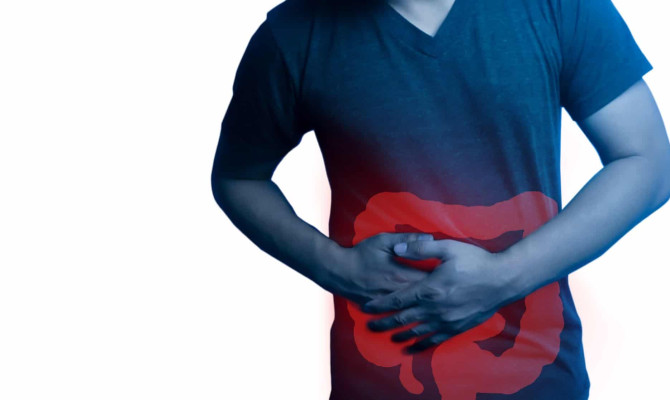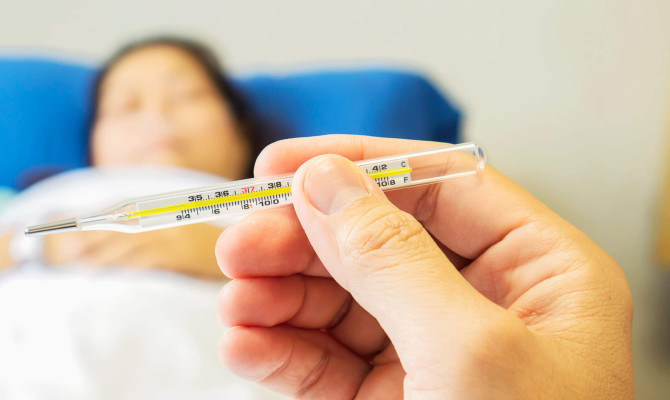Transmission, Symptoms and Treatment of Chlamydia

- Chlamydia
- 17 Aug 2023
Overview
About Chlamydia
Chlamydia is a prevalent STD (sexually transmitted disease) that is brought on by the Chlamydia trachomatis bacteria. Both men and women are afflicted, but women are affected more often than men. Many people may not be aware of the infection since it frequently presents as an asymptomatic infection. Though it has a good prognosis, if left untreated, the infection could pose serious complications or major health issues in an infected person1Overview| Researched based study from Cdc.gov ,2Overview| Researched based study from Medlineplus.gov

Transmission
How is Chlamydia transmitted?
The different ways of Chlamydia transmission are:
- Sexual activity, anal sex, or oral sex are the three main ways that someone with chlamydia might infect their partners. A person who had chlamydia and had been treated in the past can get re-infected if he/she has unprotected sex with someone who has the infection3Transmission| Researched based study from Clevelandclinic.org
- A person can also become infected by utilizing a shared sex toy from an infected person in addition to sexual activity.
- Chlamydia can also be transmitted from a pregnant woman to her unborn child during labor.
What doesn’t cause chlamydia?
Chlamydia does not always result from intimate encounters or the exchange of bodily fluids. A person cannot contract the infection through:
- Kissing.
- Eating or drinking together.
- Either giving or receiving a hug.
- Using a bathroom after someone else has used it
- Inhaling droplets from a person who coughs/sneezes 3Transmission| Researched based study from Clevelandclinic.org
Prevalence
How prevalent is Chlamydia?
- The most prevalent STI caused by bacteria is chlamydia, with 1.5 million cases recorded each year.
- The majority of chlamydia cases are asymptomatic, meaning they lack any outward indications of infection with a possibility that many of these cases go unreported.
- Among the demographic variables that could make it more likely to be diagnosed with chlamydia include age, gender, and race.
Those most susceptible to contracting chlamydia include:
- A female teenager or early adult aged 15 to 24 years
- A man who has relations with men. 3Prevalence| Researched based study from Clevelandclinic.org
Symptoms
What indications and symptoms are related to Chlamydia?
The majority of chlamydia sufferers (between 50% and 70%), regardless of assigned sex, never show any symptoms. Because of this, the illness is frequently referred to as a “silent infection”.
If symptoms do appear, they may vary depending on whether you have a penis or a vagina.
Signs of chlamydia in women and people who are AFAB (assigned female at birth) include the following:
- White, yellow/grey discharge from the vagina that may smell
- Pyuria (pus in the urine)
- Increased urge to urinate
- Dysuria (pain/burning sensation while urinating)
- Bleeding between cycles
- Dyspareunia (painful sexual activity)
- Experiencing burning or itching sensation in the vagina
- Dull, lower-regional belly pain.
Signs of chlamydia in men and people who are AMAB (assigned male at birth) include the following:
- A transparent, watery/mucus-like discharge from the penis
- Dysuria (pain/burning sensation while urinating).3Symptoms| Researched based study from Clevelandclinic.org
In pregnancy
- There is some evidence that untreated chlamydial infections can lead to early labor in expectant mothers.
- Children born to infected moms may have eye and respiratory chlamydial infections.
- A key contributor to newborn conjunctivitis (pink eye) and early infant pneumonia is chlamydia which is the leading cause of the infection.4Symptoms| Researched based study from Nlm.nih.gov
Consultation
When to seek medical help?
A healthcare professional should be consulted when chlamydia affects other parts of the body other than reproductive organs that include:
Anus
- An infected person may experience pain, discomfort, bleeding, and/or a mucus-like discharge in the buttocks.
Throat
- An infected person may experience a painful throat if the bacteria is in the throat.
Eyes
- Conjunctivitis associated with symptoms such as redness, pain, and/or discharge from the eyes, can occur when the bacteria gets into the eyes3Consultation| Researched based study from Clevelandclinic.org
Diagnosis
How is Chlamydia diagnosed?
Laboratory test
- Chlamydia is detected through laboratory tests on urine samples or swab samples obtained from sites like the penis or cervix.
NAAT
- The most popular chlamydia screening test is a nucleic acid amplification test (NAAT), which requires a healthcare clinician to collect either a vaginal or cervical swab or a urine sample from an infection which is then transported to a lab where it gets examined for the bacterium, Chlamydia trachomatis.
Routine Examination
The most serious chlamydia problems occur in a person with a vagina than in a person with a penis which calls for a need for routine screening in a person with a vagina.3Diagnosis| Researched based study from Clevelandclinic.org
Every year, those with a high risk of developing the illness should be tested for chlamydia, which includes:
- Women who are sexually active and under 25 years of age
- Older women who have new or multiple sex partners or a sex partner who has an STD
- Males who have sex with males (MSM).2Diagnosis| Researched based study from Medlineplus.gov
Treatment
What treatment options are available for Chlamydia?
Medicines
Medications used to treat chlamydia
- Chlamydia can be treated with antibiotics in one to two weeks. However, if your symptoms become better, don’t stop taking your prescription. When you have done taking your medication, discuss with your doctor what additional testing is necessary to ensure that your infection has been completely treated since the infection can return and re-infect an individual.
The following antibiotics are frequently used to treat chlamydia infections, which includes:
- Doxycycline (and)
- Azithromycin
If your symptoms get cured, continue taking all of your medications until they are gone, and take only the antibiotics that your doctor has recommended/prescribed3Treatment| Researched based study from Clevelandclinic.org
Avoid sexual activity
- Till your infection is healed, refrain from having any sexual activity. Beginning treatment does not guarantee that you will recover. Take all of your medications as prescribed by your doctor, and refrain from engaging in any sexual activity.
- Reach out to each sexual partner and inform any recent sexual partners that you are contaminated so that they get tested as well.
Complications
What complications can Chlamydia cause if it is left untreated?
Chlamydia poses a risk to your health if left untreated. The moment you notice any chlamydia symptoms, make an appointment with your doctor. You should also undergo routine STI (sexually transmitted infections) testing to prevent complications in the future that may include the following:
Complications in women and people who are AFAB (assigned female at birth):
Pelvic inflammatory disease (PID)
- PID is a dangerous illness that necessitates hospitalization that occurs when an infection such as chlamydia is left untreated. Infertility and persistent pelvic pain are two outcomes of PID that can obstruct the tubes and cause an ectopic pregnancy which is highly dangerous for both mother and the fetus.
Pregnancy complications
- Pregnancy complications include preterm birth that occurs if the infection is left untreated. In addition, the unborn child can also get infected if the mother has the infection.
- Chlamydia can also cause pneumonia/conjunctivitis in newborns, which, if left untreated, might result in blindness.4Complications| Researched based study from Nlm.nih.gov
Infertility
- Untreated infections can permanently harm the uterus, fallopian tubes, or vagina in a woman, making it difficult for the woman to achieve pregnancy.
Complications in men and people who are AMAB (assigned male at birth):
Epididymitis
- Is a condition that occurs due to infections such as chlamydia that causes inflammation of the epididymis (a coiled tube at the back of the testicle that stores and carries sperm) generally characterized by symptoms such as pain, swelling, and/or tenderness in testicles of an infected person.
Reduced fertility
- Chlamydia can harm sperm cells, negatively impacting the ability of a man to father a child.
Chlamydia complications that anyone can develop include:
Reactive arthritis
- Is a type of arthritis that occurs due to an infection (such as chlamydia infection), characterized by symptoms such as joint pain, stiffness, and/or swelling in the lower back, hips, knees, ankles, feet, and/or fingers in an infected person.
HIV
- Infected persons may have a higher probability of developing HIV as a serious complication if their infection is left untreated3Complications| Researched based study from Clevelandclinic.org
Prevention
How can Chlamydia be prevented?
The only strategy to prevent contracting chlamydia is to refrain from engaging in vaginal, anal, or oral sex with a chlamydia-infected partner. Additionally, watch out for sex devices that may contain germs coming into contact with your genitalia.
It’s not always possible to tell if a current or prospective partner is chlamydia positive, especially since many chlamydia patients are asymptomatic.
It’s good to incorporate safer sex practices into regular sex life with prevention in mind which includes the following practices:
- Using condoms during oral, anal, and/or intimate contact
- Using dental dams (a thin sheet of latex/polyurethane that is used to reduce the risk of spreading sexually transmitted infections) during oral sex/vagina-to-vagina contact
- Avoiding the sharing of sex toys, washing them completely after each use, and covering penetration-focused sex toys with condoms.
- Having sex solely with one partner.3Prevention| Researched based study from Clevelandclinic.org
When may someone engage in intimate relationships again after receiving chlamydia treatment?
- Before the sick person and his or her sex partner(s) have finished their therapy, sexual activity should not be engaged.
- An infected person should wait seven days before engaging in sexual activity if they have just recently taken one dosage of the medication.
- It is advised to wait until all doses of a specific medication have been consumed if it is to be taken for seven days before engaging in sexual activity1Prevention| Researched based study from Cdc.gov
Prognosis
Prognosis of Chlamydia
- A first-time course of antibiotic therapy has a 95% success rate against the infection. With immediate treatment beginning and after taking the whole course of antibiotics, the prognosis is good.
- Relapse is a possibility even though basic therapies seldom fail to treat patients.
- Re-infection is frequent and frequently brought on by sexual partners who are not treated for the infection or by acquisition from a new partner5Prognosis| Researched based study from Nlm.nih.gov
Takeaway
Takeaway tips
- Speaking with your doctor about anything sex-related, including STI prevention, can be awkward. But in order to properly care for you, your doctor has to be aware of a crucial aspect of your health including your sexual life.
- Your health could be seriously jeopardized if you don’t get the necessary chlamydia treatment on time
- To reduce your chance of complications, talk to your doctor about getting routinely tested for chlamydia and other STIs
- Practice safer sex to prevent the spread of chlamydia and its complications.3Takeaway| Researched based study from Clevelandclinic.org
Any feedback on this article?
 This Articles content was accurate
This Articles content was accurate Very Informative Article
Very Informative Article I have a question or a comment
I have a question or a comment
 This article contains inaccurate content
This article contains inaccurate content This article was not helpful
This article was not helpful I have a question or a comment
I have a question or a comment
We appreciate your helpful feedback!
Checkout our social pages
References
-
Centers for Disease Control and Prevention
Chlamydia – CDC Basic Fact Sheet | Overview | Prevention
-
Medline Plus
Chlamydia Infections | Overview | Transmission | Diagnosis
-
Cleveland Clinic
Chlamydia | Symptoms | Diagnosis | Treatment | Transmission | Prevention
-
National Library of Medicine
Chlamydia trachomatis: Management in Pregnancy | Complications
-
National Library of Medicine
Chlamydia | Prognosis


































